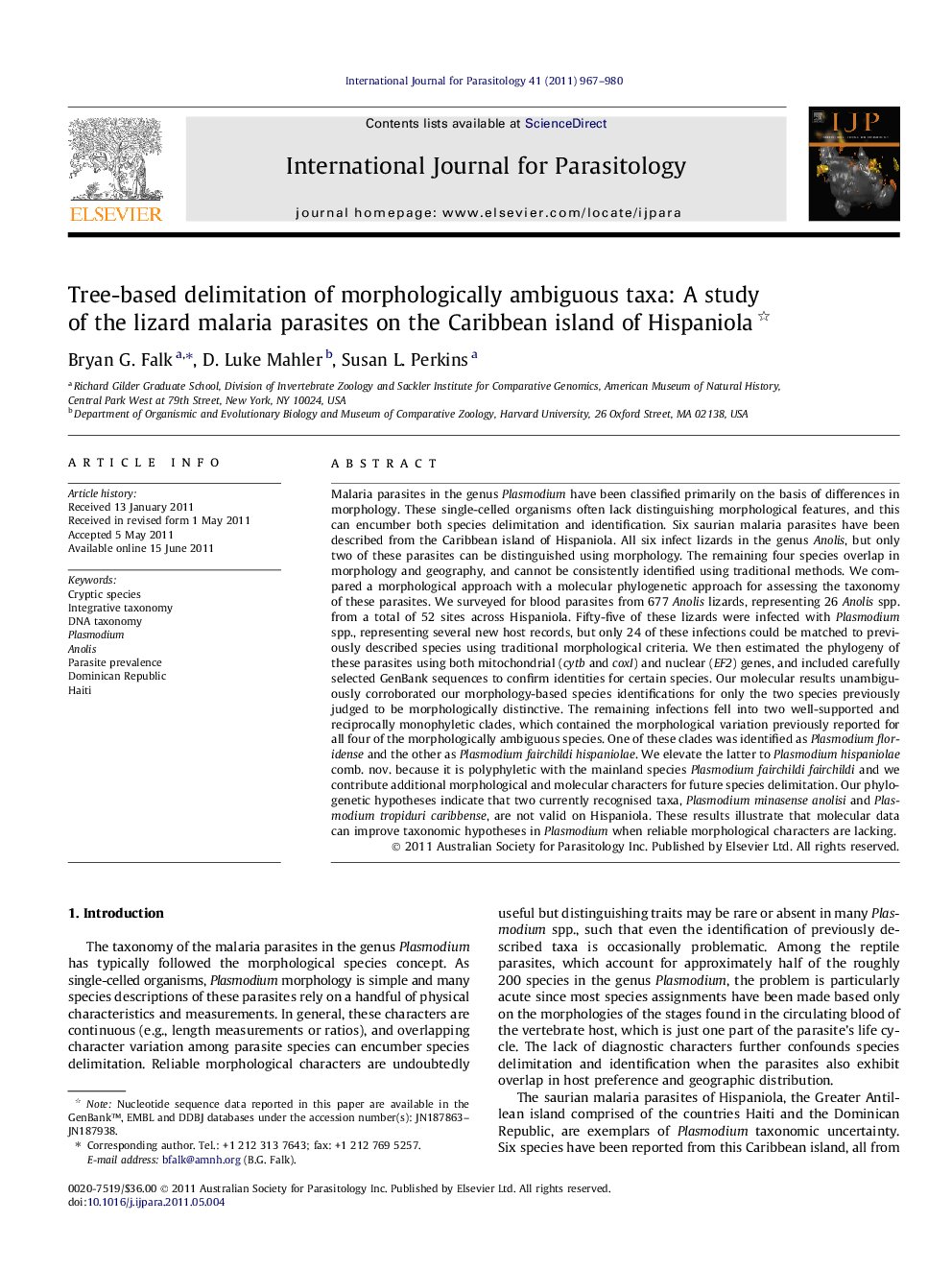| کد مقاله | کد نشریه | سال انتشار | مقاله انگلیسی | نسخه تمام متن |
|---|---|---|---|---|
| 2436175 | 1107282 | 2011 | 14 صفحه PDF | دانلود رایگان |

Malaria parasites in the genus Plasmodium have been classified primarily on the basis of differences in morphology. These single-celled organisms often lack distinguishing morphological features, and this can encumber both species delimitation and identification. Six saurian malaria parasites have been described from the Caribbean island of Hispaniola. All six infect lizards in the genus Anolis, but only two of these parasites can be distinguished using morphology. The remaining four species overlap in morphology and geography, and cannot be consistently identified using traditional methods. We compared a morphological approach with a molecular phylogenetic approach for assessing the taxonomy of these parasites. We surveyed for blood parasites from 677 Anolis lizards, representing 26 Anolis spp. from a total of 52 sites across Hispaniola. Fifty-five of these lizards were infected with Plasmodium spp., representing several new host records, but only 24 of these infections could be matched to previously described species using traditional morphological criteria. We then estimated the phylogeny of these parasites using both mitochondrial (cytb and coxI) and nuclear (EF2) genes, and included carefully selected GenBank sequences to confirm identities for certain species. Our molecular results unambiguously corroborated our morphology-based species identifications for only the two species previously judged to be morphologically distinctive. The remaining infections fell into two well-supported and reciprocally monophyletic clades, which contained the morphological variation previously reported for all four of the morphologically ambiguous species. One of these clades was identified as Plasmodium floridense and the other as Plasmodium fairchildi hispaniolae. We elevate the latter to Plasmodium hispaniolae comb. nov. because it is polyphyletic with the mainland species Plasmodium fairchildifairchildi and we contribute additional morphological and molecular characters for future species delimitation. Our phylogenetic hypotheses indicate that two currently recognised taxa, Plasmodium minasense anolisi and Plasmodium tropiduri caribbense, are not valid on Hispaniola. These results illustrate that molecular data can improve taxonomic hypotheses in Plasmodium when reliable morphological characters are lacking.
Figure optionsDownload high-quality image (59 K)Download as PowerPoint slideHighlights
► Molecular data contradict many previous morphological diagnoses.
► There are two, not four, pigmented malaria parasites on Hispaniola.
► Overall prevalence of malaria parasites is low in Hispaniolan Anolis.
► Several new host associations are reported.
Journal: International Journal for Parasitology - Volume 41, Issue 9, 1 August 2011, Pages 967–980